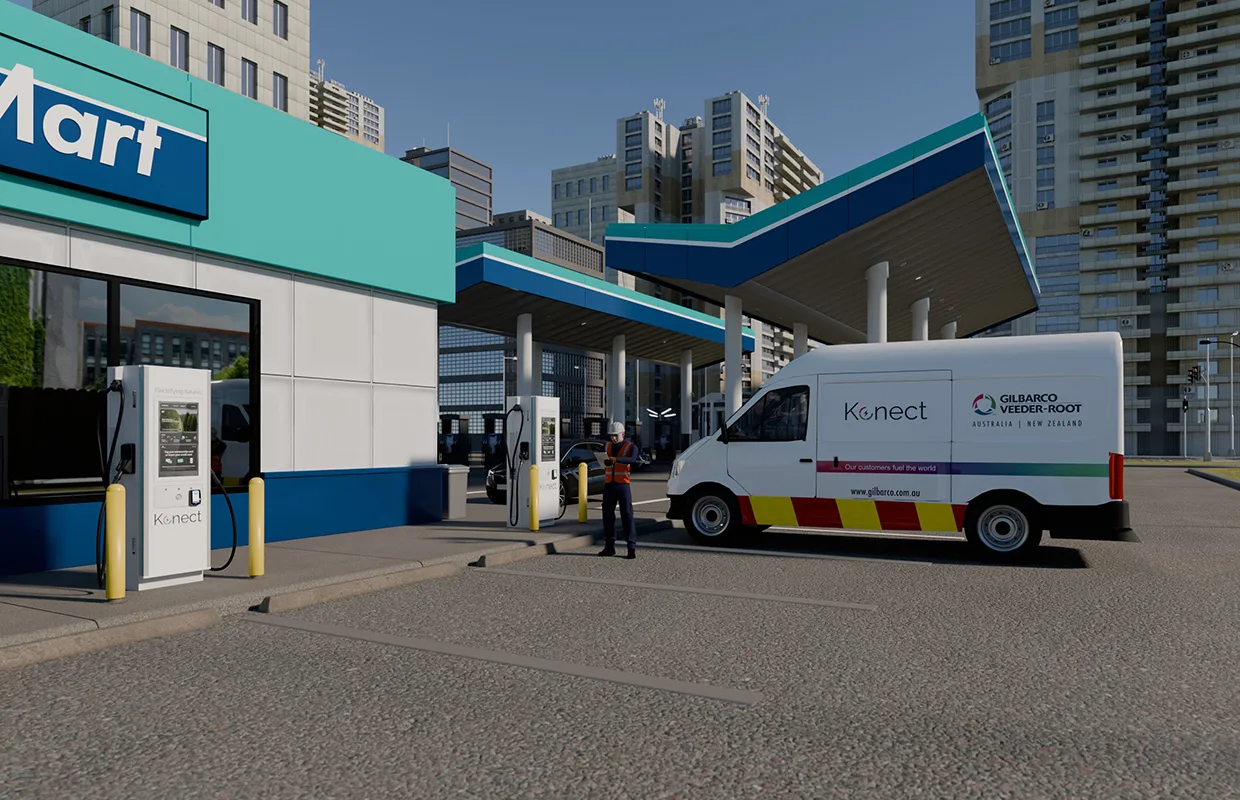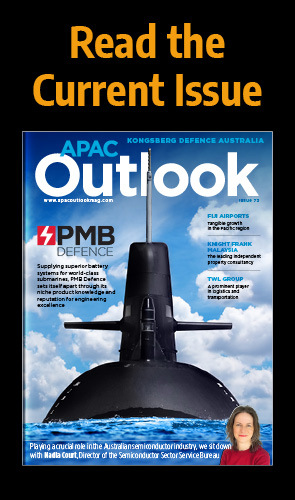The mission of Konect, a Gilbarco Veeder-Root business unit, is clear – to do electric vehicle (EV) charging better. We learn about the launch of its EV charging network for fuel retailers in Australia with Managing Director, Merrick Glass.
EV CHARGING DONE BETTER
For Australia, establishing a reliable and accessible vehicle charging network will be crucial in meeting its environmental targets.
To achieve these ambitions, EV market share in the country must reach 30 percent by the end of the decade.
Australia’s shift to electrified driving has shown promising progress in recent years, with EVs taking nearly 10 percent of the sector in 2024.
In anticipation of further growth, the government has pledged to install 50,000 public charging stations by 2030.
As a provider of comprehensive EV charging solutions, Konect will support Australian service stations through this transition, ensuring they maintain their high-traffic status in an era where multiple fuel types will be used.
Service stations must evolve into ‘multi-fuel convenience hubs’ that cater to what visitors and local communities need on a day-to-day basis.
For EVs in particular, fuel retailers must strike the right balance between convenience and charger reliability to attract and retain customers in the electric age whilst ensuring commercial viability.
That is precisely what Konect is designed to help achieve, as President, Merrick Glass, discusses further with us.
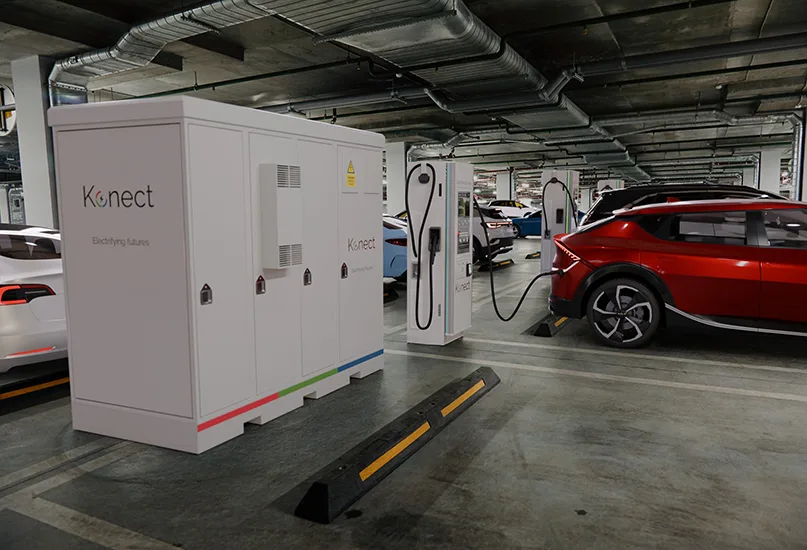
Q&A WITH MERRICK GLASS, MANAGING DIRECTOR, KONECT
How is Konect’s EV charging network transforming Australian service stations into multi-fuel convenience hubs?
Merrick Glass, Managing Director (MG): We believe a multi-fuel future is what the industry will most likely adopt.
The energy transition will not just rely on EVs; a mix of fuels – including compressed natural gas, hydrogen, and traditional fuels – will become the norm, with adoption rates dependent on application.
Indeed, several global original equipment manufacturers (OEMs) have recently reaffirmed their commitment to internal combustion engine vehicles, alongside ongoing investment in EVs and synthetic fuels.
Given OEMs’ evolving priorities and the diverse demands of their customers, it’s crucial for fuel retailers to cater for a diversified energy mix.
A broad energy offering provides both flexibility and resilience in the fuel retail sector. With EVs representing one of the critical pathways for the mobility industry moving forwards, a well-developed charging infrastructure will be a vital component of this multi-energy landscape.
What needs of visitors and local communities do these hubs meet?
MG: The charging experience fundamentally needs to evolve. Drivers’ expectations of their local charging stations are shifting – they want an experience as effortless as petrol refuelling with equally seamless facilities.
Yet, many public charging stations do not currently meet these expectations; lighting may be inadequate, locations can be difficult to find, and amenities to occupy charging time are often lacking.
For a significant number of drivers without reliable home-charging options, these shortcomings can make the difference.
The shift to electric mobility is, of course, a necessity, but it must also offer a convenient and appealing experience for drivers.
Considering both aspects, it is clear that fuel retailers have a major opportunity to bridge this gap. Positioned along key transport routes, they provide a familiar setting for drivers and offer essential amenities.
Situated on local street corners and along city-to-suburb corridors, these businesses will evolve into hubs of convenience where waiting for an EV to charge is no longer an inconvenience.
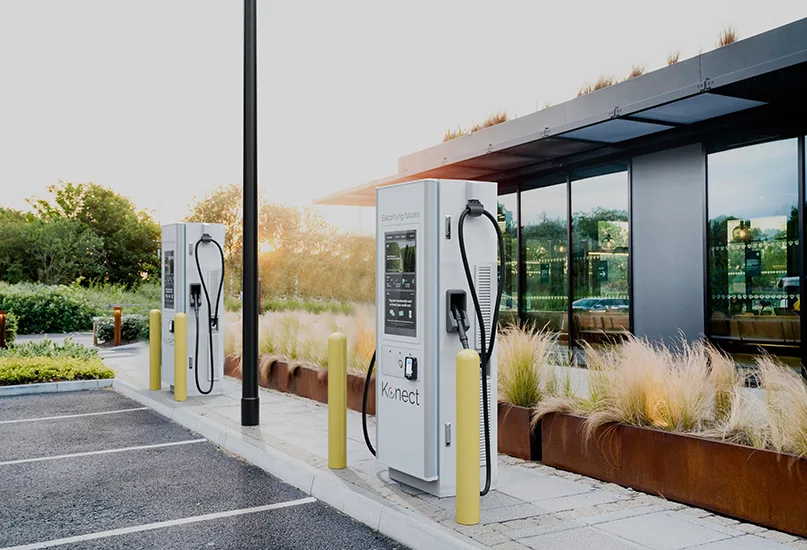
Why else should service stations seize this opportunity to deliver the EV charging experience Australians crave?
MG: In our view, the rise of EVs on Australian roads presents the perfect chance for fuel retailers to futureproof their businesses. However, this should not be seen merely as an opportunity but as a necessity for survival.
The number of service stations in Australia has fallen from 25,000 in the 1970s to around 7,000 today.
What’s more, 80 percent of the current fuel retail network will be unprofitable by 2035, according to Boston Consulting Group. Adapting the business model is therefore essential – and that work must begin now.
Crucially, consumer demand and the right conditions for change are already in place. Australia is a market rich in innovation, has a passion for progress, and offers favourable circumstances set to drive strong growth in EV adoption over the coming years.
Fuel retailers simply need to take the same step – with the right strategy and tools to make it happen.
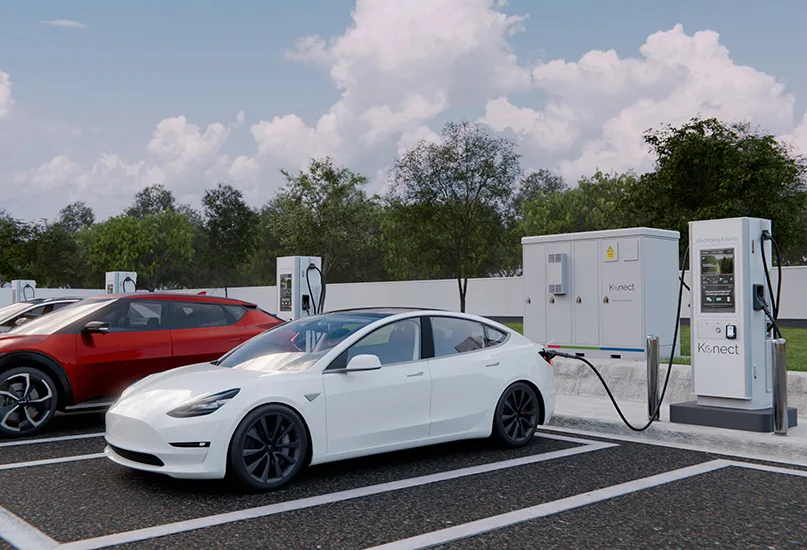
Finally, how does the EV charging network put Konect in a prime position to support Australia’s EV transition?
MG: It is vital to recognise the blockers fuel retailers face in the transition to electric mobility – not just in delivering effective service but also establishing a viable business case for reliable and profitable EV charging.
To help fuel retailers realise their full potential and navigate this shift successfully, we at Konect have ensured that the right support and technical expertise are readily available.
For instance, from the very beginning, retailers need to not only determine the optimal number of chargers to install but also assess local grid capacity and identify the most efficient charging model for their needs.
This, in turn, ties into the requirement to make the entire operation commercially viable. Retailers require reliable chargers and ongoing servicing to maximise uptime, but they must also explore new, smart revenue streams to strengthen their business case.
This is achieved by integrating the entire charging and retail ecosystem, creating a fully end-to-end, ‘watts-to-wheels’ experience.
Such a model enables retailers to generate additional revenue through carbon credits, selling stored energy back to the grid and monetising longer EV charging dwell times by attracting customers into the convenience store.
With fuel retailers and charge point operators working to bridge the charging infrastructure gap, there is a unique opportunity to rethink both charging and fuel retail for a new era.
By helping fuel retailers evolve and transition profitably to electrification, we can accelerate infrastructure deployment and ensure it is fit for purpose in a clean mobility future.
That is precisely what Konect has been designed to achieve, and what we are committed to delivering.



